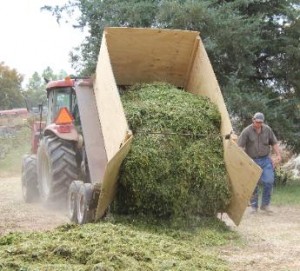Usda Alliws Soybeans in Ground Beef
en Español
El inglés es el idioma de control de esta página. En la medida en que haya algún conflicto entre la traducción al inglés y la traducción, el inglés prevalece.
Al hacer clic en el enlace de traducción se activa un servicio de traducción gratuito para convertir la página al español. Al igual que con cualquier traducción por Internet, la conversión no es sensible al contexto y puede que no traduzca el texto en su significado original. NC State Extension no garantiza la exactitud del texto traducido. Por favor, tenga en cuenta que algunas aplicaciones y/o servicios pueden no funcionar como se espera cuando se traducen.
English is the controlling language of this page. To the extent there is any conflict between the English text and the translation, English controls.
Clicking on the translation link activates a free translation service to convert the page to Spanish. As with any Internet translation, the conversion is not context-sensitive and may not translate the text to its original meaning. NC State Extension does not guarantee the accuracy of the translated text. Please note that some applications and/or services may not function as expected when translated.
Collapse ▲
Cows in North Carolina are usually fed hay during the winter. Hay quality is often deficient,  so that supplemental protein and/or energy are often fed. Common supplements fed to cows include protein tubs, blocks or liquids (usually with Urea as the major Crude Protein source), whole cottonseed, whole soybeans, or a mixed concentrate.
so that supplemental protein and/or energy are often fed. Common supplements fed to cows include protein tubs, blocks or liquids (usually with Urea as the major Crude Protein source), whole cottonseed, whole soybeans, or a mixed concentrate.
Recently, delayed harvest and very wet conditions resulted in very low quality soybeans with many loads being rejected or sold at a large discount. We have had many questions about the potential feeding value of these beans. Whole, raw soybeans make an excellent feed for beef cows as they have a high level of Crude Protein (40%) and Fat (20%).
We have very limited information on the potential mycotoxin levels in these damaged soybeans as the visual presence of very moldy damaged beans is a good indicator of potential mycotoxins. In three samples submitted by farmers in the last several weeks, it has been identified that Zeralanone is the most prevalent mycotoxin at levels that could impact animal health. Levels ranged from 1,221 to 4,535 parts per billion (ppb) and the level of concern for healthy cattle is 250 ppb. It is important to note that there is relatively little research on mycotoxins in cattle and the 250 ppb is a somewhat conservative level. However, because Zeralanone has estrogenic activity, it has been shown to interfere with normal reproductive development in replacement heifers, so producers should be very cautious with heifers even when below the level of concern.
Producers should test damaged soybeans for mycotoxins, especially Zeralanone, prior to feeding or should use very conservative feeding levels (less than 1 lb/day per cow). Currently the only mycotoxin the North Carolina Department of Agriculture and Consumer Services (NCDA & CS) analyzes for is aflatoxin. To help address the issue, NCDA & CS will analyze soybeans for additional mycotoxins including Zeralanone for $50 per sample for the remainder of the winter of 2015-2016.
-Soybeans are high in fat (around 20%). Nutrient analysis is needed on soybeans before feeding and a ration balanced to limit fat to no more than 4% of total Dry Matter Intake for cattle, so the possible upper limit of feeding is about 20% of the diet or 5 lbs for mature cows. However, note practical feeding levels are usually from 2 to 3 lbs/cow daily. Additional concentrate needed may be better provided as corn or other high energy ingredient. Do not feed raw soybeans free-choice.
-Enzymes in unprocessed soybeans can inhibit digestion in non-ruminants (pigs) and pre-ruminants (young calves). Do not feed unprocessed soybeans to pigs or to calves under 300 pounds.
-Raw soybeans contain urease, which rapidly breaks down urea into ammonia. Do not feed raw soybeans to cattle that are receiving a supplement or feed containing non-protein Nitrogen (Urea) as this could lead to ammonia toxicity and death. Protein tubs, blocks and supplements may contain Urea, check the label. With the high crude protein in whole soybeans it does not make sense to feed a urea containing protein supplement in addition to soybeans, anyway.
-Grinding raw soybeans increases digestibility, but decreases their shelf life because the fat can begin to go rancid after being exposed to air. Feed soybeans within three weeks of grinding, sooner during humid conditions.
Contact your Extension Agent for assistance in collecting and submitting soybean samples for analysis. Complete the sample submission form carefully, as some tests are optional. For soybeans, always select a Fat analysis. If soybeans are damaged request mycotoxin analysis, including Zeralanone.
NCSU Extension
Source: https://wilkes.ces.ncsu.edu/2016/03/concerns-about-feeding-soybeans-to-cattle/
0 Response to "Usda Alliws Soybeans in Ground Beef"
Post a Comment